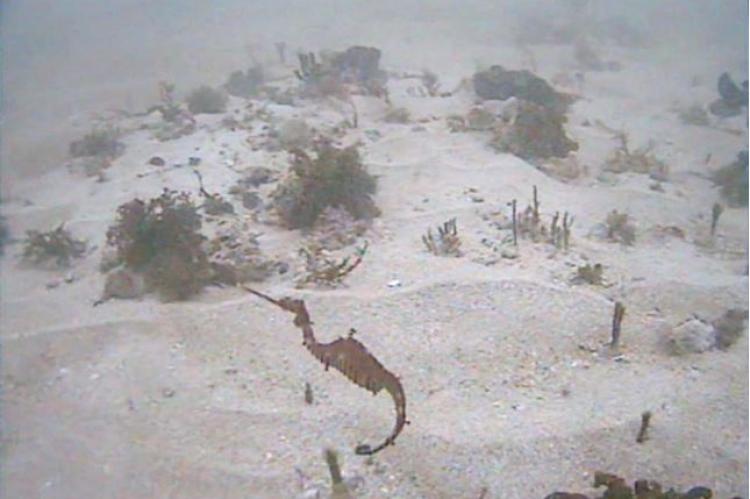Footage of ruby seadragons in the wild captured for the first time
Researchers from the Scripps Institution of Oceanography at the University of California San Diego and the Western Australian Museum led an expedition in April 2016 off the coast of Western Australia to locate ruby seadragons, a newly discovered third species of seadragon, in the wild.
Using a mini-remotely operated vehicle to conduct the search, the researchers only hit paydirt after several days. Near Western Australia's Recherche Archipelago, the first ever field sightings were made. After observing two of them on video for nearly 30 minutes, the scientists uncovered new details about their anatomy, habitat and behaviour.
They were able to confirm that ruby seadragons did indeed lack leaf-like appendages, a feature long considered to be distinguishing characteristics of all seadragons. The other two known species–common and leafy seadragons–use their appendages as camouflage in the seaweed and kelp meadows where they prefer to live.
"It was really quite an amazing moment," said Scripps Oceanography marine biologist Josefin Stiller, a co-author of the new study published in the journal Marine Biodiversity Records. "It never occurred to me that a seadragon could lack appendages because they are characterised by their beautiful camouflage leaves."
The second surprise came when they saw that the ruby seadragon had a prehensile (curled tail), similar to that of their seahorse and pipefish relatives, but unlike other seadragon species. The new observations suggest that ruby seadragons may use their curled tail to hold onto objects in the high-surge waters where they are found.
The researchers also observed it feed by striking at prey, a behaviour common to the species. These observations confirmed the fish's ruby red coloration and that their habitat lacks kelp and seagrass, but is instead dominated by sponges, once considered an undesirable habitat for seadragons.
The researchers believe the ruby seadragon lost its appendages through evolution, and that its red color acts as camouflage in the deeper dimly lit waters where it lives. Whether they evolved a curly tail independently from their pipefish ancestors, or simply retained it while the other seadragons lost it, would need further study.
To safeguard the new species from overfishing, the research team recommends that the ruby seadragon be protected as soon as possible.
"Until last year, no one had ever suspected a third species of seadragon existed," said Greg Rouse, lead author and curator of the Scripps Benthic Invertebrate Collection. "This discovery was made thanks to the great benefit of museum collections."


